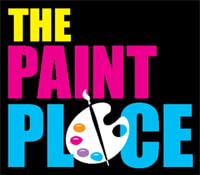Acrylic painting is a fun and exciting hobby that lets you flex your creativity. Relatively forgiving and easy to work with, acrylic paints are a great choice for first-time artists as well as those with experience in other media. You will need some basic painting supplies right off the bat, but we recommend starting only with some inexpensive essentials. As you gain experience and skill, you will figure out what works for you, and can purchase additional supplies as needed.
Acrylic Paints
There is a dizzying array of acrylic paints on the market, and it can be tough to know what to buy. Fortunately, there are just 7 major factors that differentiate them:
Quality: Acrylics come in two quality levels: student and artist (or professional). As you might suspect, artist quality paints are generally considered superior, but are also more expensive. It’s generally best to start with student quality paints for your early experimentation, and then graduate to artist quality paints once you are ready to start preserving or selling your work.
Color: The sheer number of colors out there is staggering, and many new artists tend to over-buy. Instead, consider buying a paint set that includes 10 or so basic colors, which you can mix to create many new shades. Later, you can add on specific colors as desired.
Permanence: Permanence is the ability of the paint to resist fading. Lower permanence ratings are great for experimentation, while only the highest ratings should be used for works that you intend to sell.
Viscosity: Viscosity refers to the thickness and flow ability of the paint. Start with heavy body paints first, as they can easily be thinned with water as needed. Later, you might want to experiment with other viscosities, as well as additives, to find just the right thickness for each application.
Packaging: Acrylic paints are sold in both jars and tubes. Jars are larger, so it is best to stick to small tubes until you are sure you are happy with a particular paint. Once you know what you want, though, jars are the most cost-effective option.
Drying Time: Traditional acrylics dry very quickly, which can be both a pro and a con, depending on what you are trying to do. You can extend drying time by adding a retarding medium, or by purchasing a relatively new type of acrylic paint known as “open” or “interactive.”
Brand Name: The brand you choose is a matter of personal preference, so be sure to experiment with different brands. Be cautious when mixing brands within the same painting, though, as differences in chemical makeup can lead to poor blending, curdling, and other problems.
Paintbrushes
There are 8 different styles of paintbrushes, from round to flat to fan, and everything in between. Brushes are also available in different lengths, and with both natural and synthetic bristles. Each type of brush is best for a specific application, from quickly filling in wide spaces to creating fine details. However, it is not necessary to buy a wide variety of brushes right off the bat. Start with inexpensive medium length brushes in round, flat, and fan. As you gain experience, you will want to experiment with different brushes to determine which ones are best for different effects.
Canvases
Technically, one of the major advantages of acrylic paints is that they can applied to all sorts of items, from heavy paper to metal. Canvases are still the best choice for beginners. They can be classified by weight, texture, and fiber type, and come in a variety of styles:
Stretched: Stretched canvases consist of pieces of canvas stretched over a wooden frame and primed to accept paint. They can be a bit pricey, but are the simplest option for beginning artists who want their paintings to last.
Panels: Canvas panels, which consist of canvas that is primed and mounted on a wooden board, are a great choice for experimentation. They are lightweight and inexpensive, but will degrade with time. Less expensive panels are made from other fabrics such as muslin, which can degrade more quickly, but are fine for works that are not expected to last.
Pads: Canvas pads are literally bound pads, similar to sketchbooks, that consist of sheets of either canvas (that can be stretched or mounted if desired), or canvas paper (heavy paper with many of the qualities of canvas). Canvas pads are not designed for permanent works, but those with real canvas sheets can be kept for many years with proper care.
Rolls: Canvas rolls are a great choice for DIY artists, but are not recommended for beginners. As the name suggests, they are simply large rolls of unstretched, unprimed canvas. You will need to stretch and prime the material before you begin, or make the artistic choice to use it as-is.
Palette
A palette is used to mix paints. Although the traditional artist’s palette is wooden, rounded, and features a thumb hole, today’s artists have many options. Possible materials include:
Real Glass
Safety Glass
Plexiglass
Plastic
Acrylic
Disposable Paper
Moisture-Retaining
Each type of palette has its own pros and cons. Besides real glass, which can be dangerous if dropped, it’s worth buying a few different inexpensive palettes to see which you like best.
Extras
Although the above supplies will get you started, you will probably end up picking some additional items along the way. These include such items as:
Masking Tape
Palette Knife
Gesso
Easel
Apron
Paint Additives
Scraping Tools
Pencils and Charcoals
You will also need some basic cleaning supplies, including a cup to dip brushes, some liquid soap, and a handful of rags or a roll of paper towels. Fortunately, acrylics are relatively easy to clean up.

